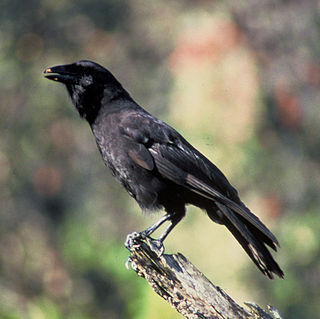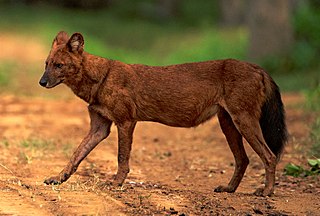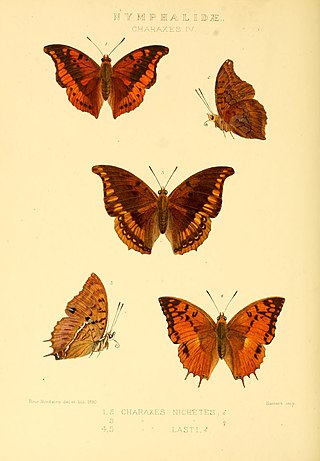
The International Union for Conservation of Nature (IUCN) Red List of Threatened Species, also known as the IUCN Red List or Red Data Book, founded in 1964, is an inventory of the global conservation status and extinction risk of biological species. A series of Regional Red Lists, which assess the risk of extinction to species within a political management unit, are also produced by countries and organizations.

The genus Androstephium is a group of North American plants in the cluster lily subfamily within the asparagus family. It contains two species native to the southwestern and south-central United States.

An IUCN Red List critically endangered species is one that has been categorized by the International Union for Conservation of Nature as facing an extremely high risk of extinction in the wild. As of December 2023, of the 157,190 species currently on the IUCN Red List, 9,760 of those are listed as critically endangered, with 1,302 being possibly extinct and 67 possibly extinct in the wild.

The Saint Helena olive is an extinct species of flowering plant. It is the only member of the genus Nesiota. It was endemic to the island of Saint Helena in the South Atlantic Ocean. Despite its name, it is unrelated to the true olive, but is instead a member of the family Rhamnaceae, the family which contains buckthorns and jujube. The last remaining tree in the wild died in 1994, and the last remaining individual in cultivation died in December 2003, despite conservation efforts. It is thus a prime example of recent plant extinction. The Saint Helena olive belongs to the tribe Phyliceae, which are mostly endemic to Southern Africa.

Androstephium coeruleum, commonly called blue funnel-lily, is a herbaceous perennial growing from corms. It has light blue to violet purple flowers and grows up to 35 cm tall. It is found growing in prairies and on grassy slopes in its native range within Texas, Oklahoma and Kansas of the United States. It disperses its seed by wind.

Oxypetalum coeruleum is a species of flowering plant, native to South America from southern Brazil to Uruguay. The synonymous name Tweedia caerulea is also used. Growing to 100 cm (39 in) long, it is a straggling evergreen perennial with heart shaped, gray-green, downy leaves. It is grown for its clear pale blue, star-shaped flowers, which are long lasting and cut well. The summer flowers age to purple and are followed by 30 cm (12 in) long, boat-shaped seed pods. The seeds have downy parachute-like tufts (cypsela).

A species that is extinct in the wild (EW) is one that has been categorized by the International Union for Conservation of Nature as only consisting of living members kept in captivity or as a naturalized population outside its historic range. Classification requires exhaustive surveys conducted within the species' known habitat with consideration given to seasonality, time of day, and life cycle. Once a species is classified as EW, the only way for it to be downgraded is through reintroduction.

Randia aculeata, commonly known as white indigoberry or white indigo berry, is a species in the Rubiaceae. It is a shrub or small tree that grows from 2 to 6 m tall. R. aculeata is native to Florida, Bermuda, the Bahamas, elsewhere among the Caribbean islands, and also from Mexico, Puerto Rico south through Central and South America to Colombia.

The San Felipe hutia, also known as the little earth hutia, is small, critically endangered, rat-like mammal found on the small island of Cayo de Juan Garcia off the southwest coast of Cuba. It was discovered in 1970 and is possibly extinct. Little is known about the species, except that it lives in swamps and coastal mangrove forests. It is a member of the hutia subfamily (Capromyinae), a group of stout rodents native to the Caribbean that are mostly endangered or extinct.

An endangered species is a species that is very likely to become extinct in the near future, either worldwide or in a particular political jurisdiction. Endangered species may be at risk due to factors such as habitat loss, poaching, invasive species, and climate change. The International Union for Conservation of Nature (IUCN) Red List lists the global conservation status of many species, and various other agencies assess the status of species within particular areas. Many nations have laws that protect conservation-reliant species which, for example, forbid hunting, restrict land development, or create protected areas. Some endangered species are the target of extensive conservation efforts such as captive breeding and habitat restoration.
Beilschmiedia bancroftii is a tree species in the family Lauraceae. It is native to Queensland in Australia. Common names include yellow walnut, yellow nut and canary ash.

Nuxia floribunda, the forest elder, forest nuxia or wild elder, is a species of tree in the Stilbaceae family, that is native to moist regions of southern Africa, East Africa and central tropical Africa.
Celtis madagascariensis is a species of flowering plant endemic to Madagascar.

Charaxes lasti, the silver-striped charaxes, is a butterfly in the family Nymphalidae. It is found in Kenya and Tanzania.

Northern Zanzibar–Inhambane coastal forest mosaic, also known as the Northern Swahili coastal forests and woodlands, is a tropical moist broadleaf forest ecoregion of coastal East Africa. The ecoregion includes a variety of habitats, including forest, savanna and swamps.

Conophytum bilobum is a plant in the family Aizoaceae, native to southern South Africa. It blooms in autumn. It is scentless and grows to a height of 7 cm (2.8 in). The specific epithet bilobum comes from the two-lobed bodies these plants possess.

Lasioglossum coeruleum is a species of sweat bee in the family Halictidae.
Analavelona, also known as Analavelona Massif, is a mountain in southwestern Madagascar. The massif is home to an enclave of montane subhumid forest, which is considered a sacred forest by the local people and notable for its biodiversity.
Gambeya boiviniana, commonly known as famelona, is species of evergreen tree native to Madagascar and the Comoro Islands.

Prophysaon coeruleum,, is a species of slug belonging to the genus Prophysaon, a genus known for the autotomy of its tail. It is native to western North America, from southwestern British Columbia to northwestern California, with a more isolated population in Idaho. There are conservation efforts in place to protect the blue-grey taildropper, and it is on multiple lists of species at risk.
















